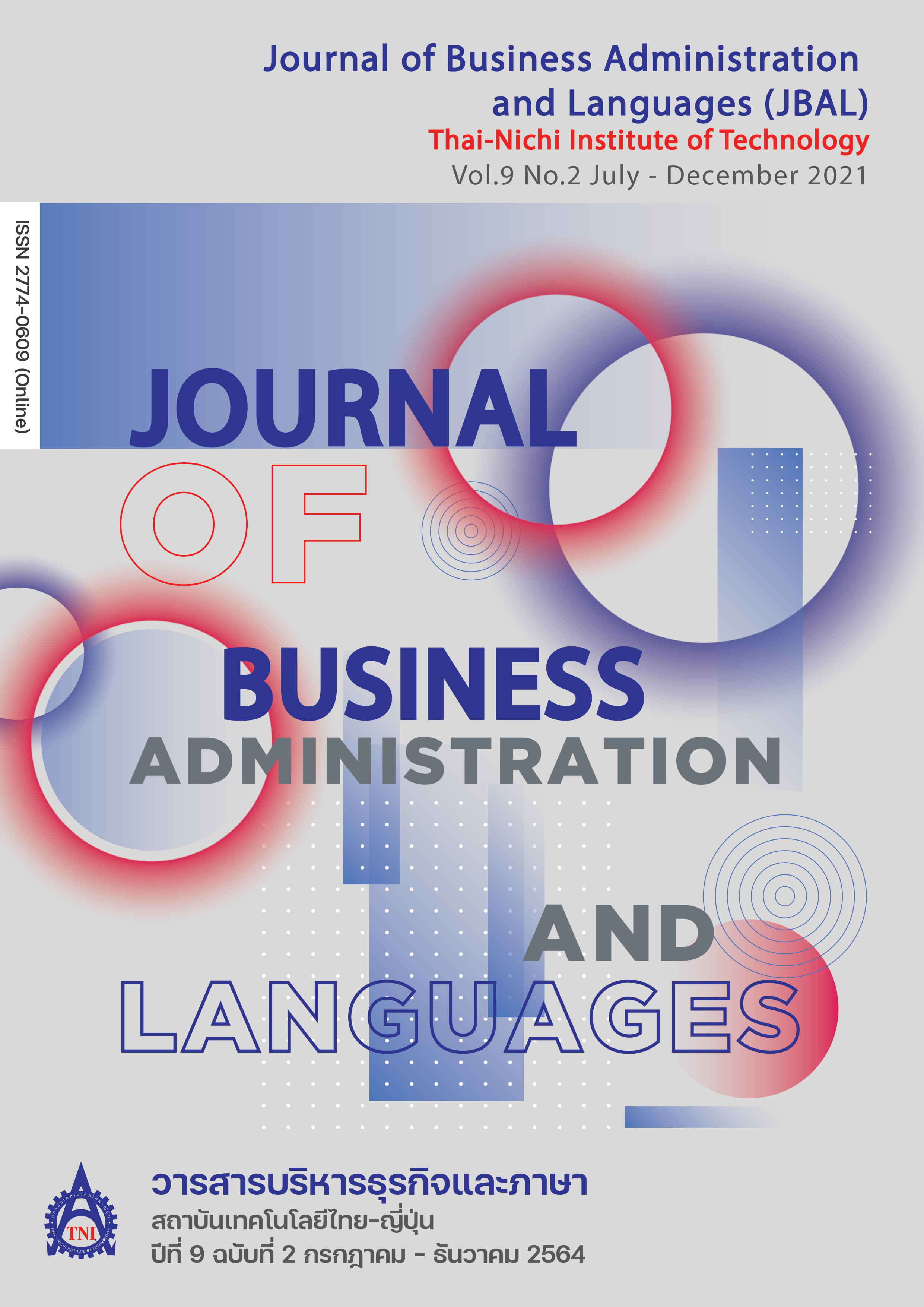Speaking Anxiety and Related Factors of Freshmen towards Foreign Language Class
Main Article Content
Abstract
Foreign language learning anxiety has a debilitating effect on students’ performance. This article examines levels of anxiety of TNI freshmen. It also explores sources of their anxiety as well as the methods used coping with anxiety. Mixed method was used for data collection. A Second Language Speaking Anxiety Scale (SLSAS) questionnaire was adapted as a tool for this research. A quantitative method could show overall results. Nevertheless, qualitative method is also suitable for a language course. An oral interview was used. Individual interviews could provide more and deeper details. The results reveal that TNI students have moderate levels of anxiety in speaking English in class. However, most students have high anxiety level. The factors were students’ confidence. The sources of lack of confidence were almost similar for each student but the solutions were different. This research found various solutions used due to the different grade performance of students.
Article Details
Article Accepting Policy
The editorial board of Thai-Nichi Institute of Technology is pleased to receive articles from lecturers and experts in the fields of business administration, languages, engineering and technology written in Thai or English. The academic work submitted for publication must not be published in any other publication before and must not be under consideration of other journal submissions. Therefore, those interested in participating in the dissemination of work and knowledge can submit their article to the editorial board for further submission to the screening committee to consider publishing in the journal. The articles that can be published include solely research articles. Interested persons can prepare their articles by reviewing recommendations for article authors.
Copyright infringement is solely the responsibility of the author(s) of the article. Articles that have been published must be screened and reviewed for quality from qualified experts approved by the editorial board.
The text that appears within each article published in this research journal is a personal opinion of each author, nothing related to Thai-Nichi Institute of Technology, and other faculty members in the institution in any way. Responsibilities and accuracy for the content of each article are owned by each author. If there is any mistake, each author will be responsible for his/her own article(s).
The editorial board reserves the right not to bring any content, views or comments of articles in the Journal of Thai-Nichi Institute of Technology to publish before receiving permission from the authorized author(s) in writing. The published work is the copyright of the Journal of Thai-Nichi Institute of Technology.
References
Gregersen, T., & Horwitz, K. (2002). Language Learning and Perfectionism: Anxious and Non-Anxious Language Learners’ Reactions to their own Oral Performance. The Modern Language Journal, 86(4), 562–570.
Hashemi, M. (2011). Language Stress and Anxiety among the English Language Learners. Procedia-Social and Behavioral Sciences, 30, 1811–1816.
Horwitz, E. K. (2016). Factor Structure of the Foreign Language Classroom Anxiety Scale: Comment on Park 2014. Psychological Reports, 119(1), 71–76.
Horwitz, E. K., Horwitz, M. B., & Cope, J. (1986). Foreign Language Classroom Anxiety. The Modern Language Journal, 70(2), 125–132.
Leary, M. R. (1999). Making Sense of Self-Esteem. Psychological Science, 8(1), 32–35.
MacIntyre, P. D., & Gardner, R. C. (1991). Methods and Results in the Study of Anxiety and Language Learning: A Review of the Literature. Language Learning, 41(1), 85–117.
Ozuturk, G., & Hursen, C. (2013). Determination of English Language Learning Anxiety in EFL Classroom. Procedia-Social and Behavioral Sciences, 84, 1899–1907.
Park, G. (2014). Factor Analysis of the Foreign Language Classroom Anxiety Scale in Korean Learners of English as a Foreign Language. Psychological Reports: Relationships & Communication, 115(1), 261–275. doi: 10.2466/28.11.PR0.115c10z2
Saito, Y., Garza, T. J., & Horwitz, E. K. (1999). Foreign Language Reading Anxiety. The Modern Language Journal, 83(2), 202-218.
Williams, K. E., & Andrade, M. R. (2008). Foreign Language Learning Anxiety in Japanese EFL University Classes: Causes, Coping, and Locus of Control. Electronic Journal of Foreign Language Teaching, 5(2), 181–183.
Woodrow, L. (2006). Anxiety and Speaking English as a Second Language. Regional Language Centre Journal, 37(3), 308–328. doi: 10.1177/0033688206071315
Young, D. J. (1991). Creating a Low-Anxiety Classroom Environment: What Does Language Anxiety Research Suggest?. The Modern Language Journal, 75(5), 427–428.


